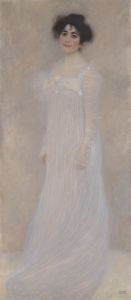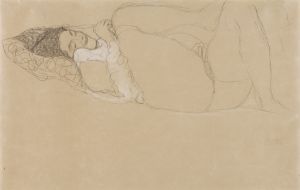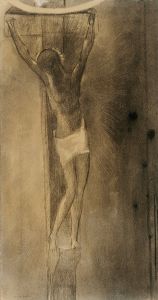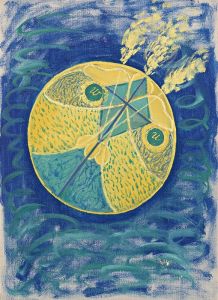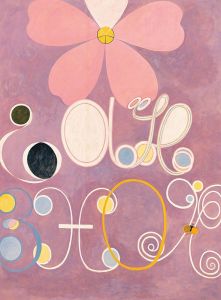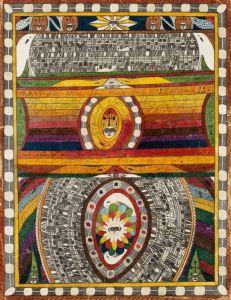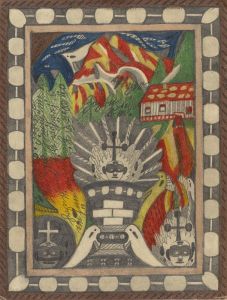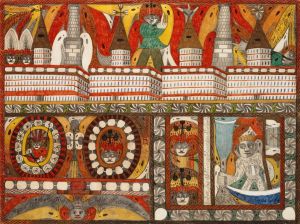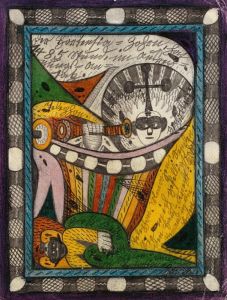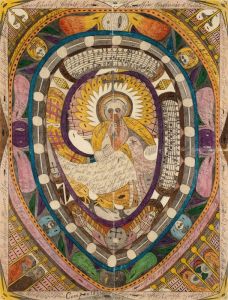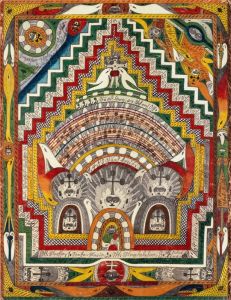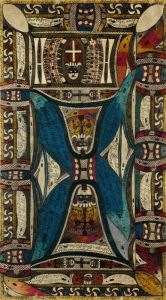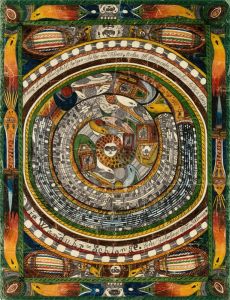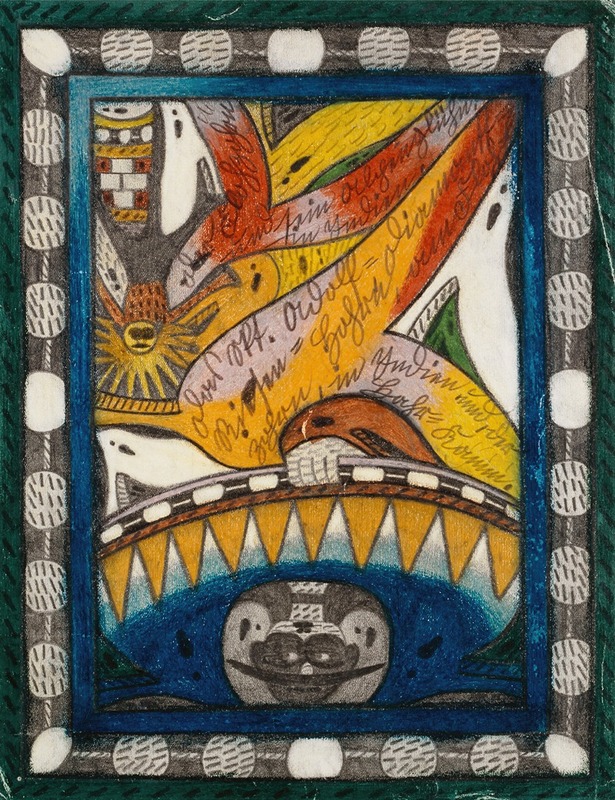
Das Skt. Adolf=Diamantt=Riesen=Hohrn, am Flohzohrn, in Indien und, der Hahr=Kamm
A hand-painted replica of Adolf Wölfli’s masterpiece Das Skt. Adolf=Diamantt=Riesen=Hohrn, am Flohzohrn, in Indien und, der Hahr=Kamm, meticulously crafted by professional artists to capture the true essence of the original. Each piece is created with museum-quality canvas and rare mineral pigments, carefully painted by experienced artists with delicate brushstrokes and rich, layered colors to perfectly recreate the texture of the original artwork. Unlike machine-printed reproductions, this hand-painted version brings the painting to life, infused with the artist’s emotions and skill in every stroke. Whether for personal collection or home decoration, it instantly elevates the artistic atmosphere of any space.
Adolf Wölfli was a Swiss artist known for his intricate and complex works, often created during his time in a psychiatric institution. One of his notable pieces is "Das Skt. Adolf=Diamantt=Riesen=Hohrn, am Flohzohrn, in Indien und, der Hahr=Kamm." This work is part of Wölfli's larger body of art, which is characterized by its unique style and the use of vivid imagery and text.
Wölfli was born in 1864 in Bern, Switzerland, and had a difficult childhood marked by poverty and instability. After a series of personal challenges and legal issues, he was institutionalized at the Waldau Clinic in Bern in 1895, where he remained for the rest of his life. It was during his time at Waldau that Wölfli began to create art, initially as a form of therapy.
His work is often categorized under the genre of Art Brut or Outsider Art, a term coined by French artist Jean Dubuffet to describe art created outside the boundaries of official culture. Wölfli's art is notable for its elaborate detail, combining drawings, musical compositions, and narrative texts. His pieces often feature fantastical elements and complex patterns, reflecting his inner world and imagination.
"Das Skt. Adolf=Diamantt=Riesen=Hohrn, am Flohzohrn, in Indien und, der Hahr=Kamm" exemplifies Wölfli's style, incorporating a mix of visual and textual elements. His works frequently include invented words and phrases, which contribute to their enigmatic and dreamlike quality. The title itself is a testament to Wölfli's imaginative language, blending real and fictional elements in a way that challenges conventional interpretation.
Wölfli's art was largely unrecognized during his lifetime, but it gained attention posthumously, particularly after Dubuffet's promotion of Art Brut. Today, his works are celebrated for their originality and depth, offering insight into the mind of an artist who created a vast and intricate universe within the confines of an institution.
The Kunstmuseum Bern holds a significant collection of Wölfli's works, allowing the public to engage with his art and appreciate its complexity. His legacy continues to influence artists and scholars interested in the intersections of art, psychology, and creativity.
In summary, Adolf Wölfli's "Das Skt. Adolf=Diamantt=Riesen=Hohrn, am Flohzohrn, in Indien und, der Hahr=Kamm" is a reflection of his distinctive artistic vision. It stands as a testament to his ability to transform personal adversity into a rich tapestry of art that transcends conventional boundaries, inviting viewers into a world of imagination and introspection.





